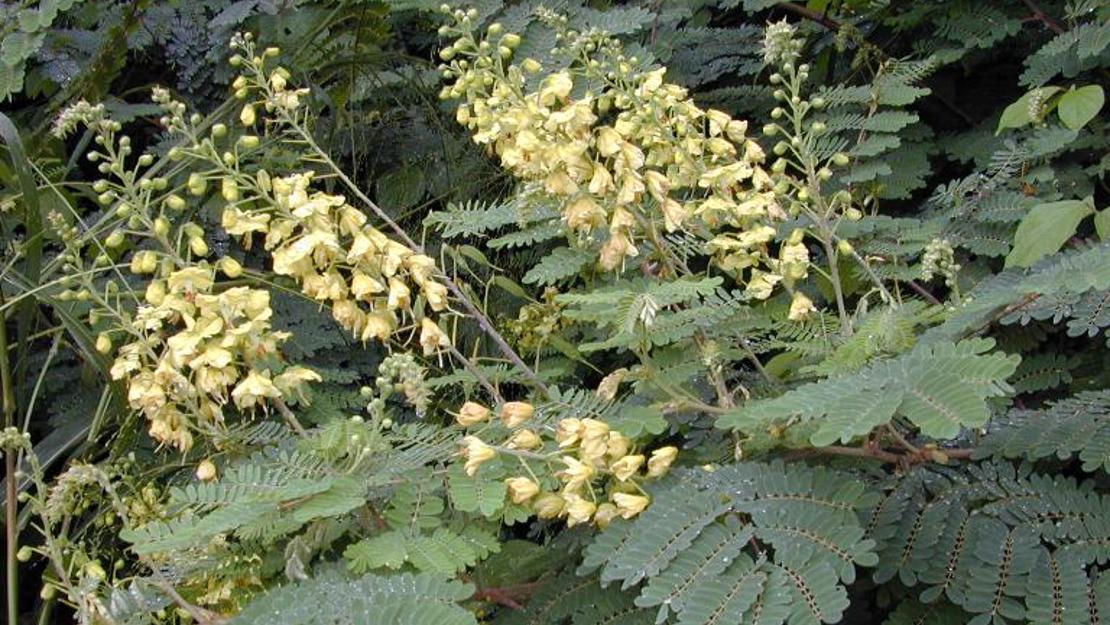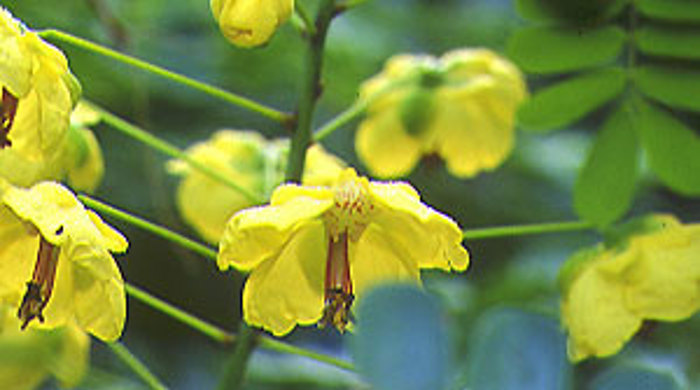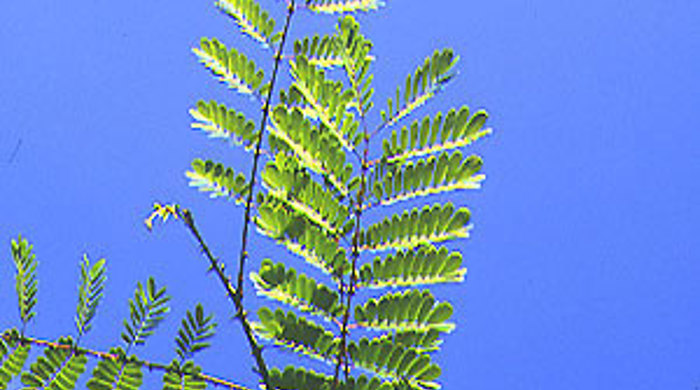Caesalpinia decapetala
Mysore thorn
Family: Fabaceae
Origin: Asia

General description
Sprawling shrub or climber. Stems are thorny. Leaves are bipinnately compound, with 4-10 pinnae pairs each bearing 8-12 leaflets, pale undersides and a prickly main stalk. Flowers are yellow and borne in erect, elongated clusters. Seed pods are dark brown, < 11 cm long and dehiscent.
What you need to know
To help protect our environment:
- You must not breed, distribute, release or sell mysore thorn. As mysore thorn is an Unwanted Organism, these restrictions apply within the Auckland region and across the whole of New Zealand.
Habitats
Disturbed forest, forest and riparian margins, grassland, disturbed sites, pasture, plantations, gardens, roadsides.
Dispersal
Seeds dispersed by water, birds, small mammals and livestock. Human-mediated dispersal through dumping of garden waste and deliberate plantings.
Impact on environment
Forms dense thickets, smothering native vegetation and impeding movement of humans and animals.
Control
Site Management
Follow up treated areas 3 times per year. Encourage natural regeneration of native plants or replant treated areas where possible after 2-3 treatments to establish dense ground cover and minimise reinvasion.
Recommended approaches
Physical control
Method: Dig out.
Plant parts requiring disposal: Seeds.
Disposal options: Remove to greenwaste or landfill if practical.
Biocontrol
Biocontrol is currently not available for this species.
Community agrichemical control recommendations
No qualifications: Cut stump and paste freshly cut base of stems with metsulfuron gel.
Basic Growsafe certified: Cut stump and spray freshly cut base of stems with 2g metsulfuron-methyl per 1 L of water.
Certified Handler/Experienced agrichemical user: Foliar spray with 5g metsulfuron-methyl per 10L of water and 20ml penetrant.
Safety notes
Plant has thorns.
Caution: When using any herbicide or pesticide please read the label thoroughly to ensure that all instructions and safety requirements are followed.





